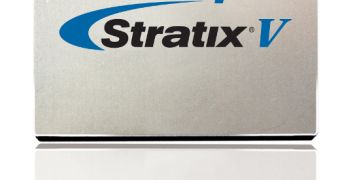The standing in the programmable logic market are going to change quite soon as analysts predict that number 2 player Altera will catch up with market leader Xilinx in quarterly sales early next year.
Just as Xilinx , Altera manufactures high, mid and low-end FPGAs (field programmable gate arrays) and lately, the company has set its sights on the application-specific standard product (ASSP) and embedded markets in addition to ASIC market, as one analyst cited by the EETimes publication claims.
According to the same analyst, this would mean that Altera is targeting a total market of nearly $50 billion, more than 10 times the size of the programmable logic market.
In addition, in 2010 the company has recorded a 64 percent growth thanks mainly to its 65, 90 and 130-nm products, which accounted for 80% of the company's sales.
To put things in perspective, products manufactured on these nodes accounted only for 20% of Xilinx' sales, so Altera seems to be in a much better position that its rival.
Furthermore, the company has already started manufacturing 40nm parts, although these are still in an early stage of production, while the first 28nm Stratix V products are expected to start sampling this quarter.
The mid-end and low-end Arria and Cyclone FPGAs will also switch to the 28nm fabrication node and the first 28nm samples are expected to arrive late this year and early next year, respectively.
Xilinx is also working on delivering the first 28-nm series 7 FPGAs this quarter, but the company is taking a unified approach, with a single architecture for all segments, that could affect its gross margin in the low-end market.
Although everything seems to shape up for Altera at the moment, the Raymond James & Associates report concludes that “it’s too early to say how 28-nm will fair for both Altera and Xilinx.”
“However, what we can say with confidence is that we believe both will continue to be successful in gaining share [versus] ASIC and ASSP solutions for many years to come.”

 14 DAY TRIAL //
14 DAY TRIAL //